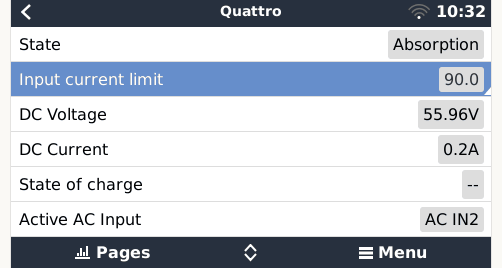I need your thought
I have
- 2x Quattro 48v 10000 in split phase 120/240v, connected to 48volts batteries.
- The system is grid-tie, with no feedback to the grid and no PV.
- The ESS is disabled.
- A Cerbo GX is used and update to date.
- The batteries BMS is linked to the Cerbo and handle the charging.
My question is:
It's normal, once the batteries are full, the Quattro kept charging continuously ? The Quattro generate a sound each time it switch between charging and no charging and I'm wondering if that could generate a excessive wear on the Quattro.
Here the video with the switching noise
Every 2-3 secondes it switching between, trying to slightly charge the batteries and stop.

And during this time, if I look into the Cerbo to validate if any current goes into the batteries, everything stay at 0

Should the Quattro stop charging at some point ?
